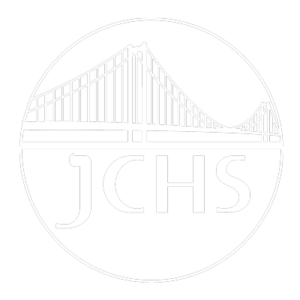Red Heifer and Journeys: The Power of Planning Ahead
by Raizy Lichtenstein, Jewish Studies Teacher
This week, two Torah scrolls are taken from the Ark and two Torah portions are read: Parashat Tzav, the weekly Torah portion; and a special additional Torah portion that is read on the Shabbat after Purim. This second portion, Parashat Parah, is the chapter of the Red Heifer. It describes an unusual process by which the ashes of a red cow are sprinkled on people who have been in contact with a corpse so that they may enter the Temple in Jerusalem in a stage of ritual purity. Here’s a sampling of the text, which outlines the creation of the purifying ashes:
God spoke to Moses and Aaron, saying:This is the ritual law that God has commanded: Instruct the Israelite people to bring you a red cow without blemish, in which there is no defect and on which no yoke has been laid.You shall give it to Eleazar the priest. It shall be taken outside the camp and slaughtered in his presence.Eleazar the priest shall take some of its blood with his finger and sprinkle it seven times toward the front of the Tent of Meeting.The cow shall be burned in his sight—its hide, flesh, and blood shall be burned, its dung included—and the priest shall take cedar wood, hyssop, and crimson stuff, and throw them into the fire consuming the cow. (Numbers 19:1-6, Translated by Sefaria)
Why is the Torah portion of the Red Heifer traditionally read after Purim? Thirty days after Purim, the holiday of Passover begins. In Biblical times, this reading would serve as a reminder for those heading to the Temple in Jerusalem to participate in the sacrifice of the Paschal Lamb, recalling the Exodus from Egypt, to be in a state of ritual purity before entering the Temple.
Nowadays, about two thousand years after the destruction of the Second Temple in Jerusalem, it’s hard to imagine gleaning much practical application from the passage of the Red Heifer.
But, Temple or not, Passover is quickly approaching, and the prescribed reading of Parashat Parah, with its equal emphasis on holiness and readiness is a good reminder that preparation and planning for Passover are valuable – and even holy – endeavors. Indeed, the Talmud teaches that preparation for the holiday includes learning its laws in advance: “One asks about and teaches the laws of Passover thirty days before Passover (Pesachim 6b).”
The power of preparation and planning is one which our students learn to appreciate and cultivate as they go through high school. In a recent ninth grade Jewish Studies class exploring the patriarch Abraham’s character development, students reflected on skills which they had personally developed in times of challenge. Many students chose to write about crises in time management which had inspired them to limit procrastination and plan ahead. Students shared ways in which they learned to limit their phone usage, use the Study Hall blocks to do homework, and find personal motivation to get their work done.
Planning in advance is a real achievement at any age. These past few months, I’ve watched in awe as my colleagues have planned our students’ upcoming Journeys to Ojai, Zion, Portland, and New Orleans. They have worked tirelessly on bus and plane routes, rooming, local guides, and catering. They’ve interfaced with parents and students on a granular level, and have problem-solved in so many ways. They have created Plan A’s for sunny days, and Plan B’s for rainy days, and they probably have Plan C’s in the wings just in case! Our students are in for a real treat this week, thanks to the incredible work of our Journeys team. Let’s take this moment to appreciate the forethought and deliberation that these amazingly talented people put into these trips, well more than thirty days in advance.
May we take inspiration from their foresight and attention to detail, and head into the Journeys and Passover season with renewed dedication to the power of planning ahead in our own lives.
Shabbat Shalom and Safe Travels to All!









